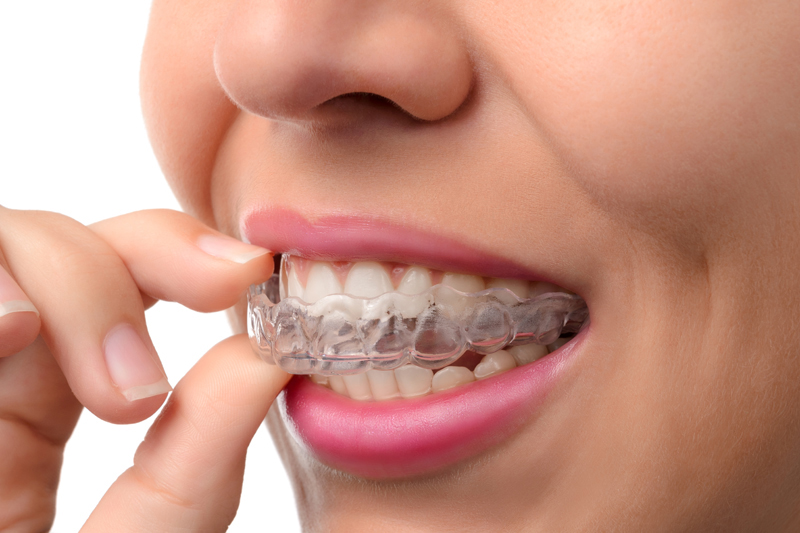
Helpful Tips for Using Invisalign®
March 1, 2016
How Same Day Dentistry Differs from Conventional Treatment
March 15, 2016Dental injuries in sports are the most common oral facial injuries. If you have active children, the odds are at some point they, or someone close to you, will suffer from dental injuries. Mouth injuries are common, especially in children, and may involve the teeth, jaw, lips, tongue, inner cheeks, gums, roof of the mouth (hard or soft palates), neck, or tonsils. Sometimes mouth injuries look worse than they are. Knowing the common types of oral injuries and what symptoms you should and shouldn’t ignore will help you remain calm during a time of duress. Understanding steps you can take to prevent dental injuries can help you avoid painful events.
The Statistics Behind Dental Injuries
The Journal of the American Dental Association (JADA) reported that 13-39% of all dental injuries are sports-related. Males are injured twice as often as females, with the two front teeth being the most commonly injured teeth. Recent studies show basketball had the highest injury rate with both male and female students due to hand or elbow contact or by collision with other players. The National Federation of State High School Associations mandates mouthguards for only four sports: football, ice hockey, lacrosse, and field hockey. For the remaining sports (soccer, basketball, baseball, etc.), the sampling for the study conducted by JADA showed that only 7 percent of those involved in those wear mouthguards.
Tips for Dental Injuries
Dental injuries are treated in a variety of ways depending on what kind of fracture took place, how deep the fracture is, and if the tooth affected was a permanent or primary tooth. To ascertain the seriousness of the injury consider the following information. A minor tooth fracture typically involves chipping of the enamel only whereas a deeper fracture can involve both the enamel and the dentin (the second hardest tissue that lies underneath the outer enamel layer but is not as hard as enamel. It is the part of the tooth that surrounds the pulp and connects to the pulp.) Chipped teeth are the most common of dental injuries.
How to Handle a Tooth that Has Been Knocked Out
Sometimes, if a tooth fracture is severe enough, it can cause the pulp tissue to die leading to infection or abscess. For this reason, a fracture that exposes both the dentin and the pulp tissue should be treated promptly. If a tooth is completely knocked out, you should get immediate attention–teeth can be reimplanted if you are able to find the tooth and act quickly. Make sure you treat dislodged teeth with extreme care and only handle it by its crown, not its root. Dislodged teeth can be gently rinsed in clean water or milk and placed back (reimplanted) into the socket from where it came. This can be done by the patient or parent and then checked by the dentist. If the parent or patient is unsure about reimplanting the tooth, then the tooth should be stored in milk or an emergency tooth preservation solution and brought to a dentist at Fort Collins Family and Cosmetic Dentistry of the Rockies as soon as possible.
Any dental injury, even a minor one, requires examination by a dentist immediately. Sometimes, neighboring teeth suffer an additional, unnoticed injury that will only be detected by a thorough dental exam. Call a member of our Fort Collins Family and Cosmetic Dentistry of the Rockies team as soon as you can for advice on how to proceed when an injury has occurred. Cold packs or ice cubes placed inside the mouth over the injured tooth or outside on the cheeks or lips can reduce pain and swelling before the patient reaches the dentist.
Common Types of Dental Injuries
Nearly 50 percent of children will have some type of injury to a tooth during childhood, many of which are preventable. Tooth and mouth injuries often occur after a fall, sports injury, or fight. The most common causes of dental injuries are sports-related, but other common causes are from auto accidents or biting down on hard objects such as: ice cubes, pencils, hard candies can cause teeth to fracture. The most common dental injury is a chipped tooth. Other types include tooth fractures or having a tooth or teeth dislodged or knocked out completely. Most dental injuries can be easily prevented by education and equipment/tools that can guard teeth from injury.
Prevention Tips for Dental Injuries
The American Academy of Pediatric Dentistry recommends a mouthguard for all children and youth participating in any organized sports activities. Even though only some sports mandate the use of mouthguards, it is good practice to wear one if there are risks of any kind. Taking the time to prevent can cause you and your loved ones a painful experience. Prevention of dental injuries also involves aligning protruding front teeth by dental braces and using facemasks and mouthguards while participating in sports. Mouthguards come in all different sizes so make sure you get the right size for your child’s mouth. If your child wears braces, they are at even more risk for injury if they don’t wear a mouthguard. Take the steps to keep them safe!
Schedule An Appointment Today
If you’d like to know more about how to prevent dental injuries or any of our other services, or if you’d like to make an appointment, call Family & Cosmetic Dentistry of the Rockies today at (970) 267-0993. If you need to reach us after regular business hours, you can also send a contact or appointment request online (below) at your convenience.



